The overall health of the plant and its yield directly depend on the quality of nutrition. European gardeners have been using ash to fertilise raspberries for many years. This organic fertiliser contains a good composition of beneficial nutrients. However, despite its benefits, ash can also cause harm. Therefore, it’s important to know how to properly fertilise raspberries and determine when ash-based fertiliser is needed.
Table of contents
Can You Fertilise Raspberries with Ash?
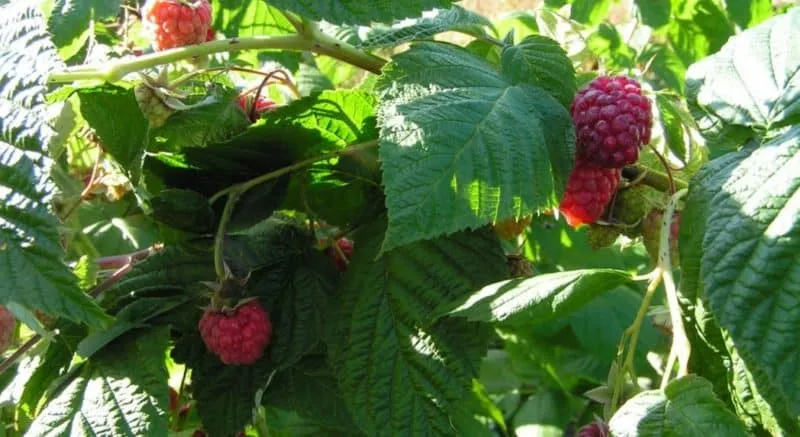
The root system of raspberries can spread up to 2 metres and deplete even the most fertile soil within a few years, making regular fertilisation essential. Raspberries are typically fertilised in spring, but summer treatments are equally important, especially during flowering and fruiting when the plant requires nutrients for proper berry formation. These minerals can be provided through organic fertilisers, particularly ash.
Note. Established shrubs planted in nutrient-rich soil do not require additional fertilisation.
Summer fertilisation takes place during flowering and fruiting, usually in late May or early June. Shallow trenches are dug around the shrubs, and the fertiliser is applied.
Benefits of Ash for Raspberries
Ash has long been used as a fertiliser. It is produced by burning various organic materials and contains numerous easily absorbable nutrients: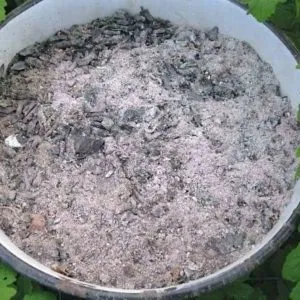
- Calcium carbonate (~17%);
- Calcium silicate (16%);
- Calcium sulphate (14%);
- Calcium chloride (11%);
- Potassium orthophosphate (13%);
- Sodium orthophosphate (15%);
- Sodium chloride (0.5%);
- Magnesium carbonate, silicate, and sulphate (~4%).
The chemical composition may vary depending on the type of burned material. For example, ash from plant stems and herbaceous crops contains about 40% potassium, while hardwood ash is rich in calcium, and coniferous wood ash contains more phosphorus.
Note. Peat and coal ash contain fewer nutrients and may even contain slag, which is harmful to raspberries.
Understanding the composition of ash makes it easy to compensate for mineral deficiencies without additional potassium or phosphorus fertilisers. Ash provides significant benefits to the soil and plants, including:
- Loosening the fertile soil layer;
- Enhancing soil aeration;
- Improving soil quality;
- Suppressing harmful microorganisms;
- Repelling pests;
- Reducing soil acidity;
- Strengthening plant immunity;
- Accelerating photosynthesis;
- Improving metabolism and energy exchange.
Fresh ash is best. Stored ash can also be used if kept in dry conditions – otherwise, it loses its nutrients and alkaline properties.
Advantages and Disadvantages
Besides its rich mineral content, ash is valued for being natural and cost-effective.
Disadvantages:
- Precise dosing is difficult due to variable composition.
- Lack of nitrogen, making it a supplementary fertiliser (especially in spring).
- Not recommended for saline soils.
- Direct contact with roots can cause burns.
Ash should not be applied after nitrogen fertilisers. The alkali in ash reacts with nitrogen, forming ammonia, which reduces soil alkalinity and causes nitrogen loss.
How to Tell if Raspberries Need Ash Fertilisation
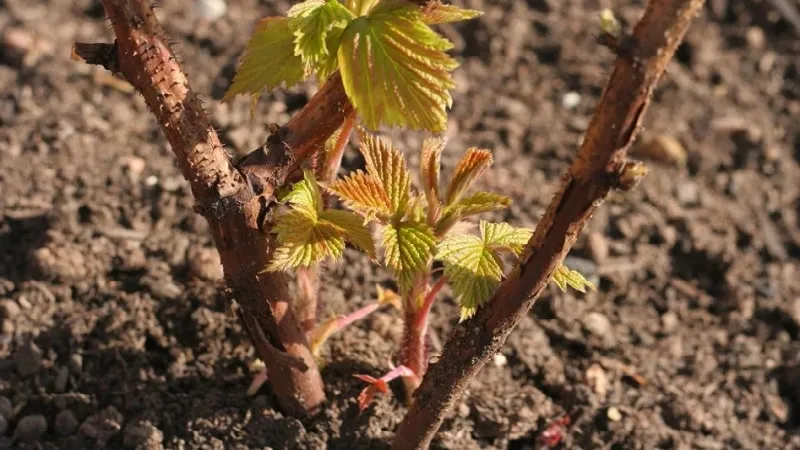
To determine if raspberries need ash fertilisation, inspect the plant carefully. Weak growth and poor fruiting indicate nutrient deficiency. Common symptoms include:
- Drying tips, yellowing leaves with green veins – iron deficiency.
- Yellow or white veins – sulphur deficiency.
- Curling leaf edges – potassium deficiency.
- Bluish stems and dark leaves – phosphorus deficiency.
- Pale, small leaves and weak stems – nitrogen deficiency.
Other reasons for fertilisation include drought damage or harsh winter conditions.
When to Apply Ash Fertiliser
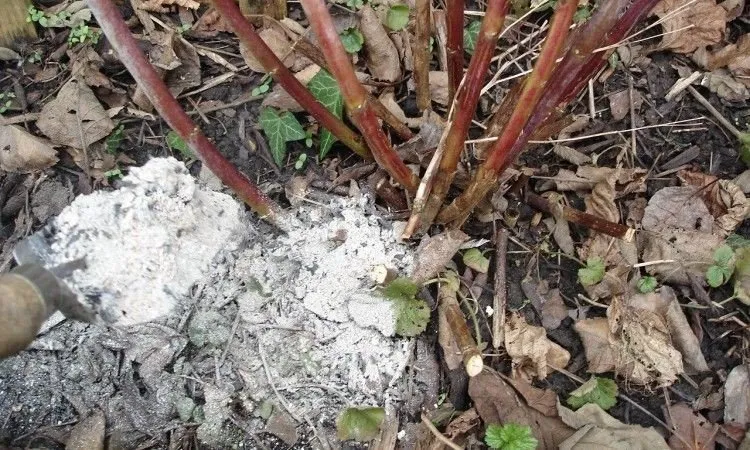
Timing varies depending on raspberry variety and local climate. Fertilise twice per season: during bud swelling or leaf emergence and after fruiting or before winter preparation.
Sandy and loamy soils require additional fertilisation in early June for optimal yield.
Note. Ever-bearing varieties need more frequent fertilisation due to continuous fruiting.
Spring (late April – early May) is ideal, once the topsoil dries but before full leaf growth. Summer fertilisation boosts yield and restores plant vitality. Organic fertilisers can be replaced with mineral or complex alternatives (e.g., Compo, Osmocote).
Fertilisation Schedule
The fertilisation schedule can be divided into three phases.
| Season | Growth Stage | Fertiliser Type |
| Spring | Leaf growth and lateral shoot development. | First organic application. |
| Summer | Flowering, fruit setting, and ripening. | Mineral fertilisers, urea, ash. |
| Autumn | Winter preparation, wood hardening, root growth. | Organic matter, phosphorus-potassium fertilisers. |
After harvest, green manure (e.g., mustard) can be sown, then cut and mixed into the soil before winter.
How to Prepare Ash Fertiliser
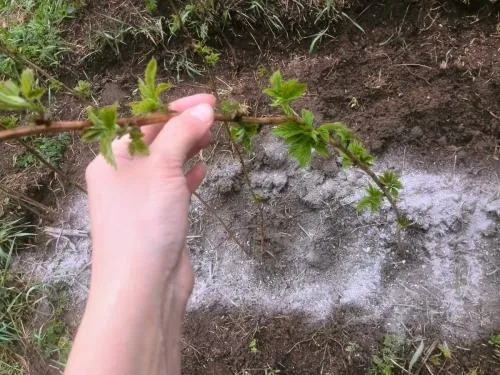
Fertiliser can be prepared in autumn by collecting and burning organic waste. Hardwood ash is safest, while coniferous ash contains resins that may harm plants. Coal and peat ash are less effective, and plastic residues must be avoided.
If unsure about homemade fertiliser, commercial alternatives are available.
Application Methods
Ash can be applied in several ways:
- Sprinkling dry ash before watering during active growth;
- Spraying an ash-water solution on leaves;
- Watering with an ash-based decoction.
Ash can be used on most soils except highly alkaline ones.
Instructions and Proportions
Adult raspberry bushes need ~600 g of dry ash per plant. Liquid ash solutions are preferable during flowering.
For dry ash: 150 g per m² when digging. For liquid solutions: 0.5 L per bush.
Common preparation methods:
- Ash solution: 200–250 g in 10 L cold water (stir before use).
- Ash decoction: 1 kg ash + 10 L water, boiled for 15–20 minutes (cool before use).
- Ash infusion: Fill ⅓ bucket with ash, add hot water, steep for 48 hours (strain before use).
Adding 50 g of soap improves leaf adhesion.
Application Guidelines
Ash fertilisation is simple, but correct dosing is crucial:
- 1 tsp ≈ 2 g ash;
- 1 tbsp ≈ 6 g;
- 1 matchbox ≈ 10 g;
- 1 cup (200 mL) ≈ 100 g;
- 1 L jar ≈ 500 g.
Can You Sprinkle Ash Directly on Raspberries?
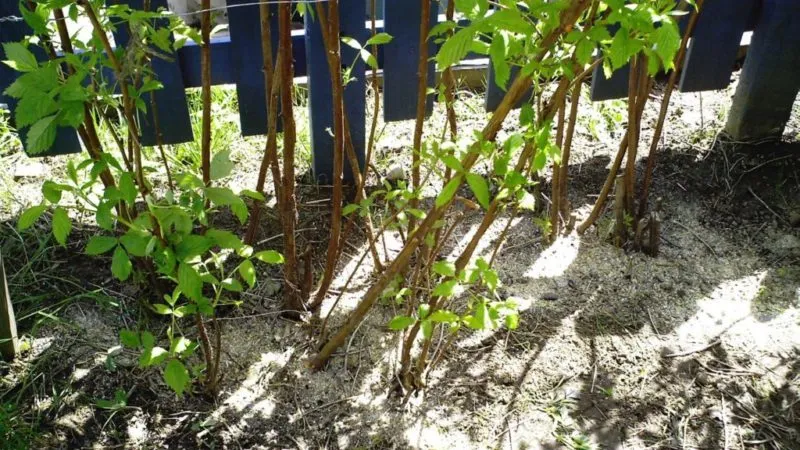
Yes, but liquid solutions are more effective. Dry ash is best used during soil turning. Since nutrients are lost in dry form, higher concentrations are needed compared to liquid fertilisers.
Planting holes should receive 1–2 kg of dry ash, applied up to four times yearly. For young plants, 100–150 g per m² (8–10 cm deep) ensures better root development.
Tips and Recommendations
Expert advice for better results:
- Avoid mixing ash with nitrogen fertilisers – apply them in different seasons.
- Ash is incompatible with superphosphates, which require neutral or slightly acidic soil.
- Ash can be added to well-aged manure compost, but not to fresh manure.
- Ash from small branches is more nutrient-rich than that from large trees.
- Never use ash from treated or painted wood – it may contain toxins.
Conclusion
Ash fertilisation is a natural, affordable, and effective way to nourish raspberries. Nutrients remain in the soil for 3–4 years, enhancing yield quality and protecting against diseases and pests.







